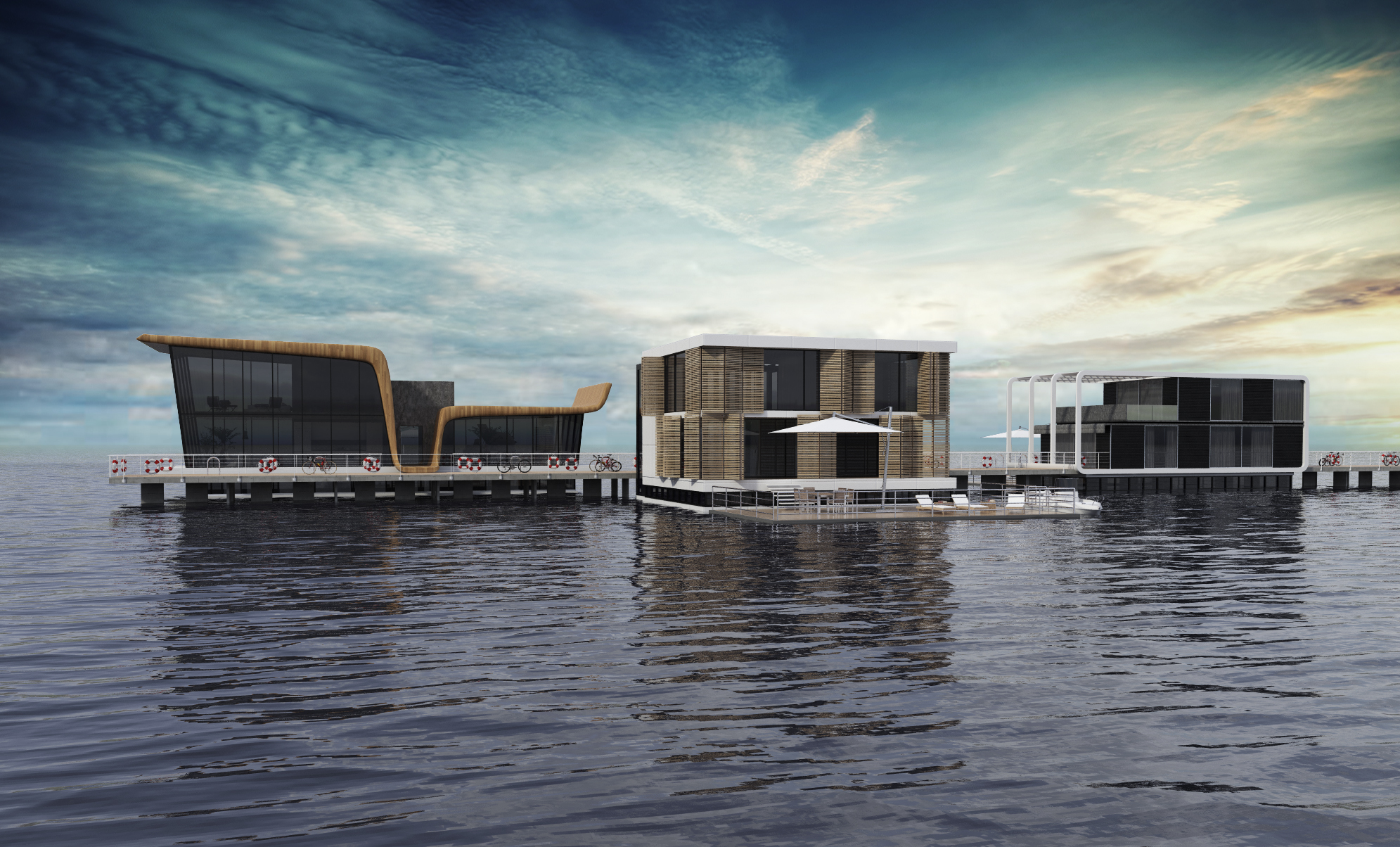Floating houses
Living on the water gets more and more popular in the north of the Europe and in the USA, is really an experience within itself and the residents enjoy every day “a feeling of being on holiday forever”. The floating homes have at least one boat tied up outside. But it’s not just the proximity to water that is attractive, It’s the impression of having so much space and being so close to the city centre. The floating homes are usually docked to a jetty in the water, getting the utility services [fresh water, waste water and electricity] into the homes through the jetties.
Most floating homes are constructed in dry docks as new houseboats and then are pulled along the water to the final destination. The house could theoretically be transported over land to its final destination, but transport over the water is cheaper and easier.
The houses are built on a concrete foundation, a so-called caisson. At the builder’s construction site, this caisson is poured in one single pour, making it free from vulnerable cracks and holes. It can lie in the water for hundreds of years without maintenance. The space inside the caisson, the so-called sous l’eau (‘under the water’), can be used as part of the house. To keep the houses in place, they have all been connected to two steel mooring poles, by means of a fixed connection. The construction allows houses to move up and down a couple of decimetres, along with the water level. The mooring poles are positioned in an angle, this giving the greatest stability.
In this way, living in a floating home is like living in your holidays dream home, but with the same benefits and comfort of living in a land-based town home



















